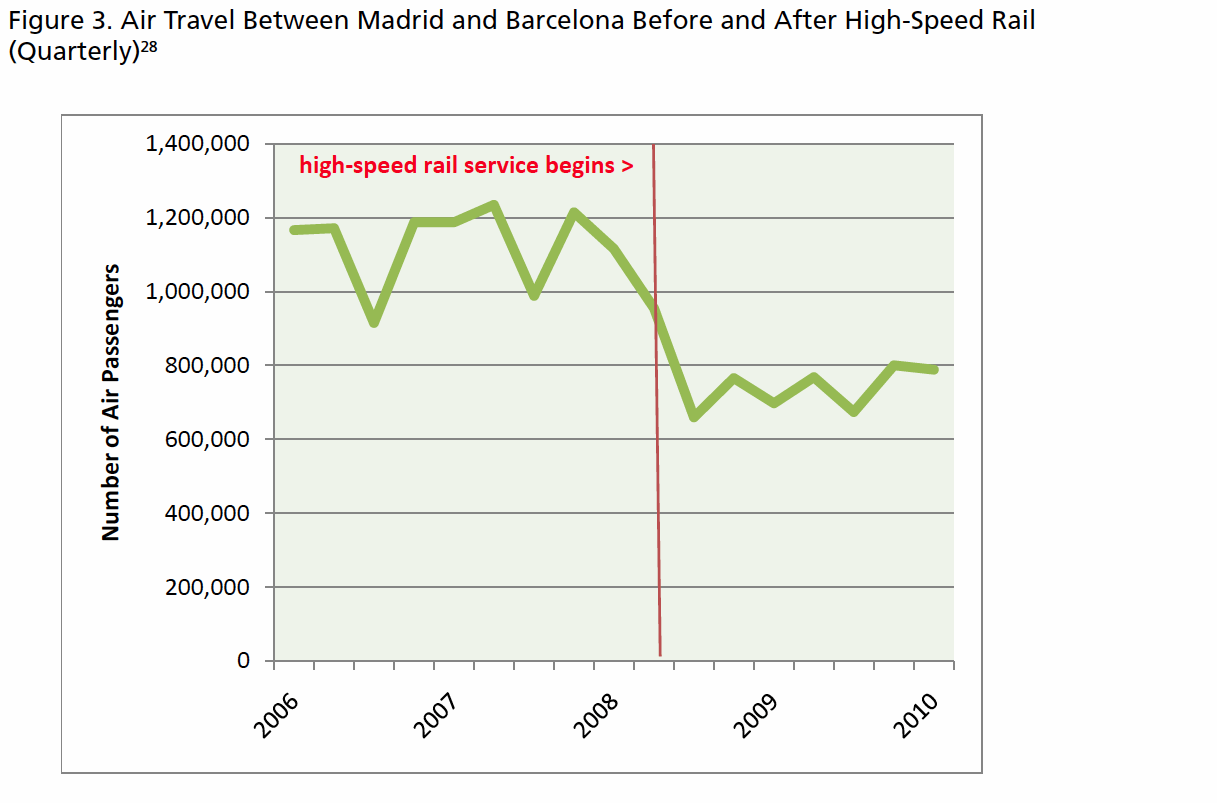U.S. PIRG EDUCATION FUND
Executive Summary
As America moves toward construction of new high-speed rail networks in regions throughout the country, we have much to learn from experiences abroad. High-speed rail lines have operated for more than 45 years in Japan and for three decades in Europe, providing a wealth of information about what the United States can expect from high-speed rail and how we can receive the greatest possible benefits from our investment.
Indeed, the experience of high-speed rail lines abroad, as well as America’s limited experience with high-speed rail on the East Coast, suggests that the United States can expect great benefits from investing in a high-speed passenger rail system, particularly if it makes steady commitments and designs the system wisely. High-speed rail networks around the world have delivered numerous benefits:
- High-speed rail systems has been able to dramatically reduce the volume of short-haul flights between nearby cities and significantly reduce inter-city car travel. In the United States, similar shifts would ease congestion on the roads and in the skies, reducing the need for expensive new investments in highways and airports.
- High-speed rail saves energy and protects the environment. In the United States, high-speed rail could cut our dependence on oil while helping to reduce air pollution and curb global warming.
- High-speed rail is safe and reliable. In the United States, reliable service via high-speed rail could be an attractive alternative to oft-delayed intercity flights and travel on congested freeways.
- High-speed rail can create jobs and boost local economies. A U.S. high-speed rail system could help position the nation for economic success in the 21st century while creating short-term jobs in construction and long-term jobs in ongoing maintenance and operation.
- Properly planned high-speed rail can encourage sustainable land-use and development patterns. In the United States, focusing new development around high-speed rail stations can reduce pressure to develop in far-flung areas, reducing other infrastructure costs such as for sewers and electricity.
To obtain the economic and transportation benefits experienced by other nations, the United States should follow through on its decision to invest in high-speed rail, while taking actions to maximize the benefits of that investment. Specifically, the United States should:
- Follow through on its decision to build a national high-speed rail system akin to the commitment to build the Interstate Highway System in the 1950s.
- Use high-speed rail to focus future development by locating stations in city centers, and planning for intensive commercial and residential development near stations.
- Make high-speed rail stations accessible to people using a variety of transportation modes.
- Integrate high-speed rail with improvements to commuter and freight rail.
- Encourage private investment, but with strong public protections.
- Keep clear lines of accountability by establishing clear criteria for funding all high-speed rail projects to ensure taxpayer money is focused on the most important projects.
- Guarantee transparency regarding how projects are evaluated, how decisions are made, and how funds are allocated and spent.
- Make high-speed rail green by investing in energy-efficient equipment and powering the system with renewable energy wherever possible.
- Set technological standards for projects receiving federal funding.
- Encourage cooperation among states through federal funding policies that reward states.
- Encourage domestic manufacturing through federal policy that expands the capacity of American companies to produce high-speed rail systems and components.
- Articulate a vision for the future of America’s rail network and measure progress toward the achievement of that national vision. An ambitious but fully achievable and desirable goal would be to link all major cities within 500 miles of one another with high-speed rail by mid-century.

About U.S. PIRG
www.uspirg.org
“With a strong network of researchers, advocates, organizers and students in state capitols across the country, we take on the special interests on issues, such as product safety,political corruption, prescription drugs and voting rights,where these interests stand in the way of reform and progress…U.S. PIRG’s mission is to deliver persistent, result-oriented public interest activism that protects our health, encourages a fair, sustainable economy, and fosters responsive, democratic government.”
Tags: Barcelona, HSR, Madrid, PIRG, Public Interest Research Groups, Spain, U.S. PIRG, U.S. PIRG Education Fund






 RSS Feed
RSS Feed